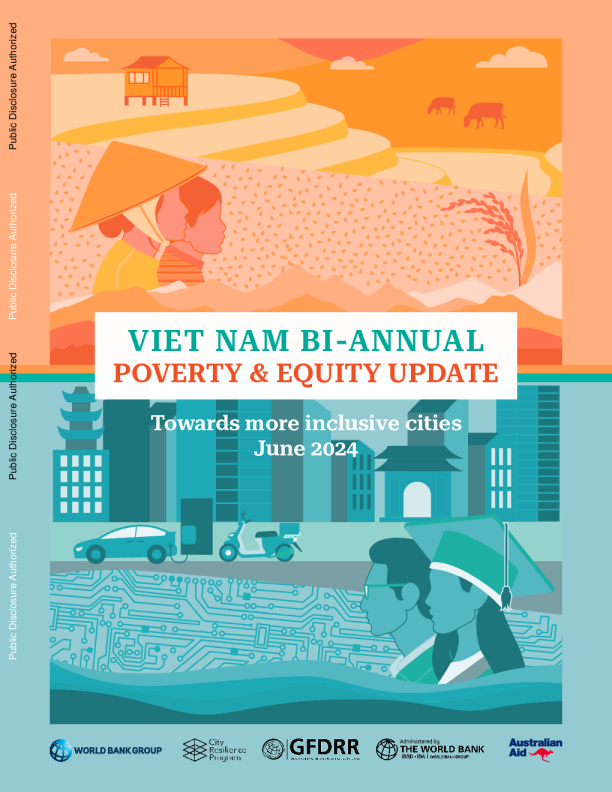安哥拉城市的贫困和脆弱性(英)
 AI智能总结
AI智能总结
TY|POVERTY|POVERTYPOVERTY|POVERTY|POVERTY|POVERTY|POVERTY| POVERTY| PPOubVliEcRDTisYclosurePOAVutEhRoTrizYed| PPOubVliEcRDTisYclosure| AuthorPizOedVERTY Publi|cDiscloPsuOrVeEARuTthYorized|PPOuVbEliRcTDYisclosu|reAuthoPrOizVedERTY RTY|POVERTY|POVERTYPOVERTY|POVERTY|POVERTY|POVERTY PO| VERPOTVYERTY| POVERTYANDVULNERABILITYINURBANANGOLA May2024 LilianaSousaandGiuliaZane EquitableGrowth,Finance&InstitutionsNote POVERTY|POVERTYPOVERTY|POVERTY|POVERTY|POVERTY|POVERTY|POVERTY OVERTY | POVERTY | POVERTY | POVERTY | POVERTY | POVERTY | POVERTY | POVER- POVERTYANDVULNERABILITYINURBANANGOLA May2024 LilianaSousaandGiuliaZane ©[2024]InternationalBankforReconstructionandDevelopment/TheWorldBank1818HStreetNW WashingtonDC20433 Telephone:202-473-1000Internet:www.worldbank.org ThisworkisaproductofthestaffofTheWorldBankwithexternalcontributions.Thefindings,interpretations,andconclusionsexpressedinthisworkdonotnecessarilyreflecttheviewsofTheWorldBank,itsBoardofExecutiveDirectors,orthegovernmentstheyrepresent. TheWorldBankdoesnotguaranteetheaccuracy,completeness,orcurrencyofthedataincludedinthisworkanddoesnotassumeresponsibilityforanyerrors,omissions,ordiscrepanciesin theinformation,orliabilitywithrespecttotheuseoforfailuretousetheinformation,methods,processes,orconclusionssetforth.Theboundaries,colors,denominations,andotherinformationshownonanymapinthisworkdonotimplyanyjudgmentonthepartofTheWorldBankconcerningthelegalstatusofanyterritoryortheendorsementoracceptanceofsuchboundaries. NothinghereinshallconstituteorbeconstruedorconsideredtobealimitationuponorwaiveroftheprivilegesandimmunitiesofTheWorldBank,allofwhicharespecificallyreserved. RightsandPermissions Thematerialinthisworkissubjecttocopyright.BecauseTheWorldBankencouragesdisseminationofitsknowledge,thisworkmaybereproduced,inwholeorinpart,fornoncommercialpurposesaslongasfullattributiontothisworkisgiven. Anyqueriesonrightsandlicenses,includingsubsidiaryrights,shouldbeaddressedto WorldBankPublications,TheWorldBankGroup,1818HStreetNW,Washington,DC20433,USA;fax:202-522-2625;e-mail:pubrights@worldbank.org. Coverphoto:LilianaSousa TABLE OFCONTENTS Acknowledgements6ExecutiveSummary8Introduction9 DemographicandHousingCharacteristicsoftheUrbanPoor11 UrbanPovertyandtheJobMarket13 FoodInsecurityandShocks17 Conclusions19 References21 6 POVERTYANDVULNERABILITYINURBANANGOLA EquitableGrowth,Finance&InstitutionsNote Acknowledgements ThisnotewaspreparedbyLilianaSousaandGiuliaZane.JulianGoetzprovidedexcellentresearchassistance.TheauthorsaregratefulfortheinputsandinsightsofBobanPaulandAlejandraCampero.OverallguidancewasprovidedbyAlbertZeufack,JuanCarlosAlvarez,andPierellaPaci. 7 POVERTYANDVULNERABILITYINURBANAFRICA EquitableGrowth,Finance&InstitutionsNote 8 POVERTYANDVULNERABILITYINURBANANGOLA EquitableGrowth,Finance&InstitutionsNote EXECUTIVESUMMARY ThoughruralAngolahashigherratesofpoverty,athirdofAngolanslivinginpovertyand40percentofthosevulnerabletofallingintopovertyareinurbanareas.Yet,Angola’spovertyalleviationstrategy–particularlyitsKwendacashtransferprogramintroducedin2020–targetsonlyruralareas.Highurbanizationratesandrecentshocksthatdisproportionatelyaffecturbandwellers,suchasfoodpricehikesandfuelsubsidyreform,meanthattacklingurbanpovertyandvulnerabilityisbecomingincreasinglyurgentinAngola.ThisnoteprovidesinsightsintothecharacteristicsoftheurbanpoorinAngolaandidentifiespolicyentrypointsrelevantfortargetingandtacklingpovertyandvulnerabilityinurbanAngola. POVERTYANDVULNERABILITYINURBANAFRICA9 EquitableGrowth,Finance&InstitutionsNote INTRODUCTION OneinthreeAngolanslivinginpoverty,and40percentofthoseatriskoffallingintopoverty,liveinurbanareas(Figure1).Themostrecentsurvey-basedpovertyestimatesshowthatathirdofAngolanswerelivinginpovertyin2018(Box1).Povertyratesaresignificantlyhigherinruralareas –55percentcomparedto18percentinurbanareas.Yet,AngolaisoneofSub-SaharanAfrica’s mosturbanizedcountrieswithabout68percentofitspopulationlivinginurbanareas.Hence,thedisparityinpovertyrateshidesthefactthatathirdofAngola’spoor(3.2millionpeople)werelivinginurbanareas(comparedto6.3millioninruralareas).Another2.5millionpeopleinurbanareas(and3.3millioninruralareas)werevulnerable–thatis,theylivedabovethepovertyline,buthadahighriskof POVERTYANDVULNERABILITYINURBANANGOLA EquitableGrowth,Finance&InstitutionsNote fallingbelowitintheeventofashock.Specifically,householdswereconsidered“vulnerable”iftheirpredictedlevelofconsumptioninthetwoyears followingdatacollectionhasatleasta50percentprobabilityoffallingbelowthepovertylineatleastonceasaresultofanegativeshock.1 10 Figure1:PovertyandVulnerabilityin2018,millionsofpeople 9.6 6.3 3.3 5.7 3.2 2.5 UrbanRural PoorVulnerabilitytofallingintopoverty Source:WorldBankcalculationsbasedonIDREA2018/19andWorldBank(2020). Note:Thisfigureisproducedbydividingthesampleintothreecategories:poor,vulnerable,andnon-poor(notshowninthefigure).Vulnerableindicatesthatthehousehold’sconsumptionisabovethepovertylinebutthatthehouseholdhasatleasta50percentprobabilityoffal




